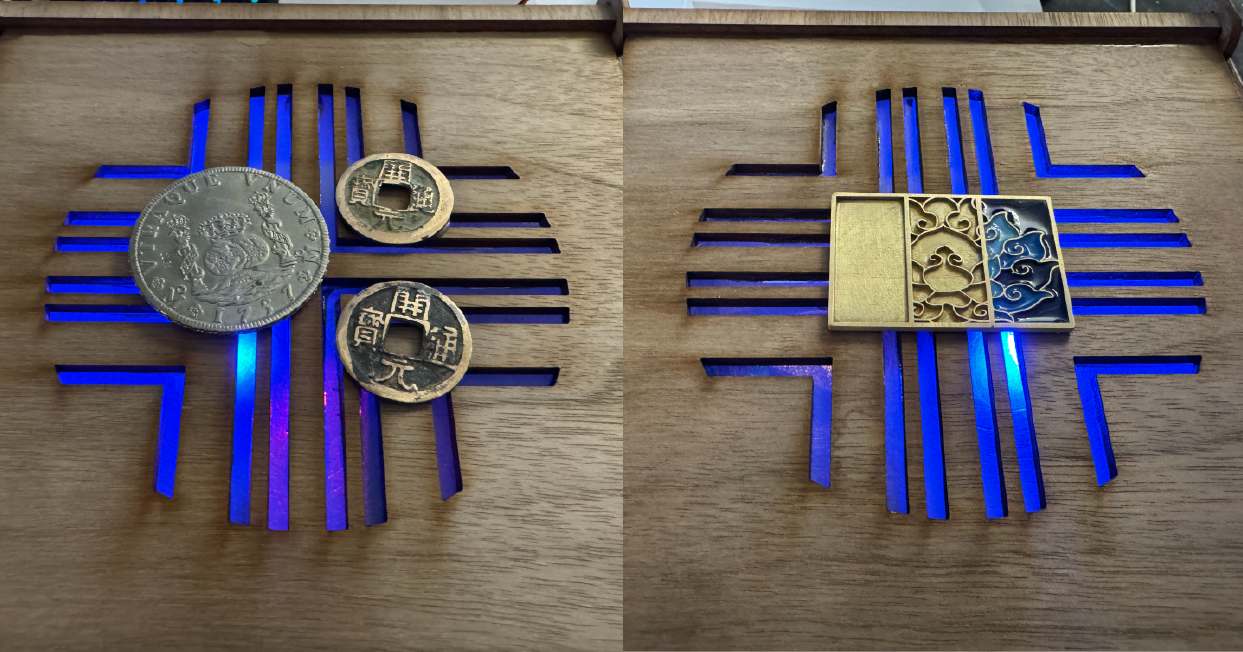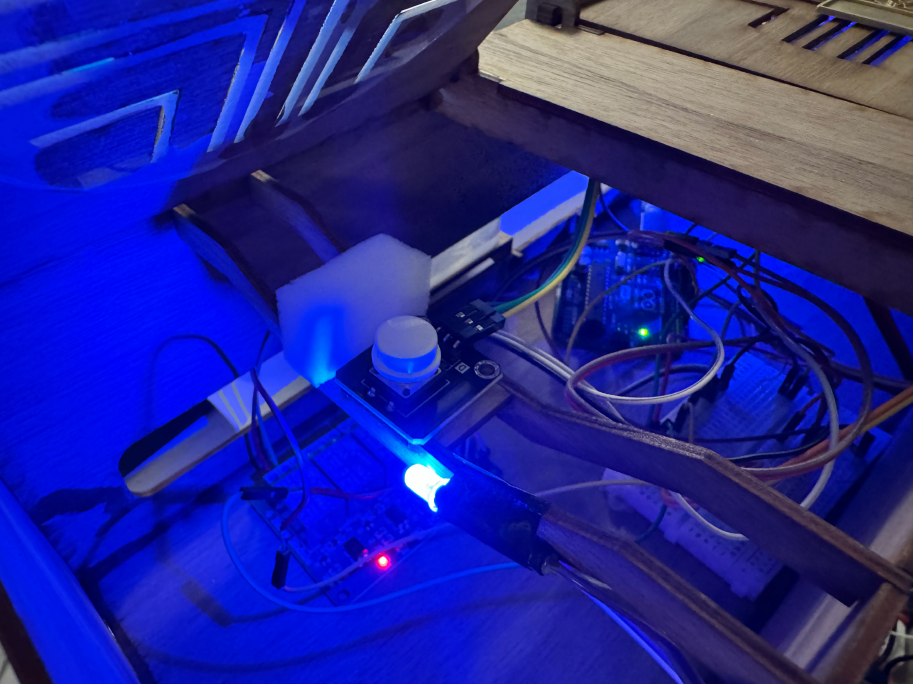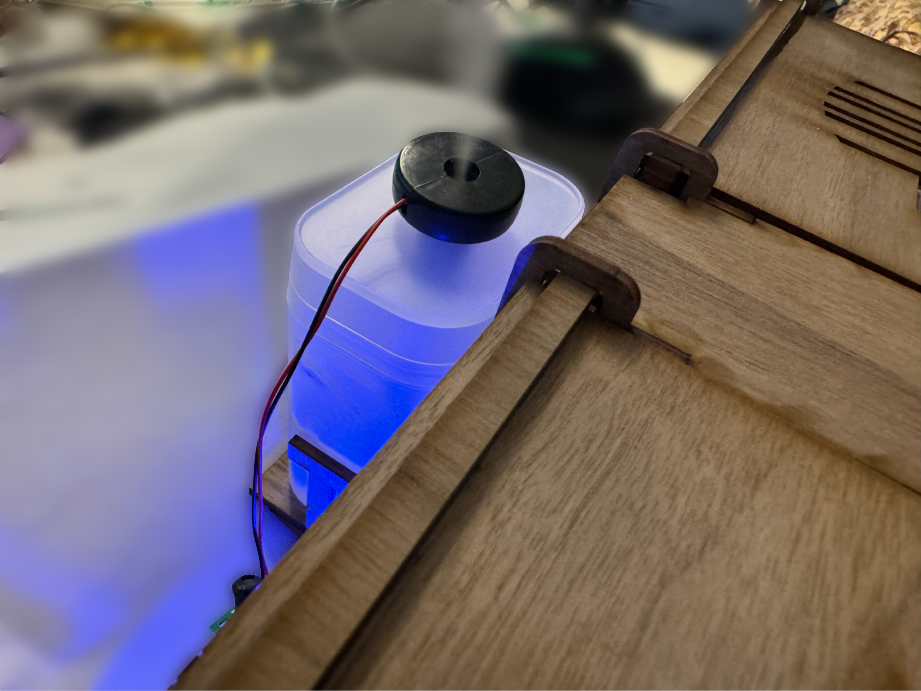For week 10, I worked on finishing up thesis paper and get it ready for submission; And design and craft physical interfact.
This week, the main improvement I made to my thesis was relocating the section discussing how the theoretical framework proposed in my project could be applied to artifacts from other cultural contexts. I also expanded this section by incorporating considerations related to the physical interface. By moving it to the conclusion, the structure now follows a more logical progression, allowing the final part of the paper to serve as a synthesis and elevation of the core ideas. This placement is more aligned with the reader’s comprehension flow than its previous position at the end of the storytelling section.

In terms of the physical interface, I replaced the original trigger mechanism based on an ultrasonic distance sensor with a button-like structure. This upgrade makes the interaction more tolerant of different user behaviors and significantly improves overall stability. Additionally, I enhanced both the user feedback mechanism and the scent release system.

For user feedback, I added a layer of frosted translucent material beneath the two sample pieces, allowing light from two small bulbs to shine through. When a visitor touches a sample and triggers the interaction, the light turns off. Once the interaction becomes available again, the light turns back on. This form of interaction—subtle yet attention-guiding—suits the museum environment well. Furthermore, the translucent structural design incorporates patterns inspired by Chinese culture, including inward-pointing iconography that guides users’ attention toward the samples.

The new trigger structure is an integrated assembly consisting of a light bulb, a sponge piece block, and a button mechanism. The main challenge was securing these components beneath the platform that holds the touchable objects, while ensuring that the button could be easily activated with minimal force yet still rebound reliably. The solution was the addition of a sponge block. Initial tests showed that when users pressed the touchable objects with too much force, the structure failed to rebound. By incorporating the sponge, the design now ensures consistent rebound performance without significantly increasing the required pressing force.

As for the scent release device, I addressed a recurring issue in the previous design where the sponge sticks inserted into the liquid container often fell inside. To resolve this, I modified a small box into a liquid reservoir, resulting in a more stable structure that minimizes the need for ongoing maintenance.